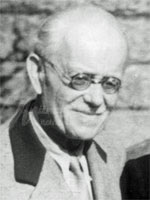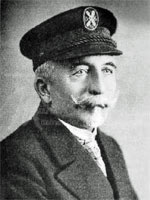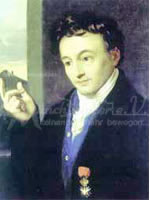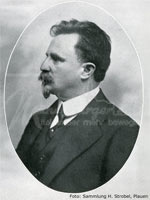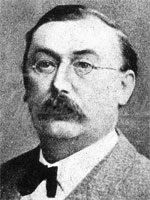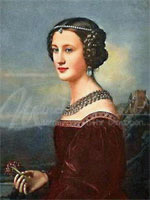
August Horch School (with references to famous Münchbergers)
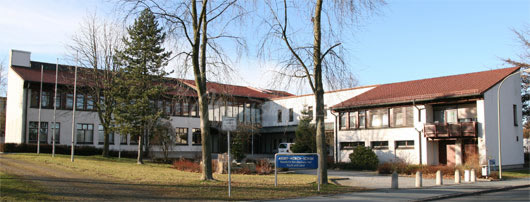 The vocational school system in Münchberg can be traced back to the year 1820. The present day August Horch School (Office of the State Vocational Training Center) was inaugurated on July 25, 1986. The new building was erected after the district master builder stated in an expert opinion that the old trade school (Luther School) was not suitable for occupation. On July 6, 2004 the Münchberg branch of the Naila State Vocational School was given the name “August-Horch-Schule" (August Horch School). The naming had to do with finding someone who could be linked to economic recovery, as well as technology and innovation. They quickly came up with August Horch, who had spent the last years of his life in Münchberg. The training of the motorcar mechanics and auto mechanics at this school encouraged the naming. Due to the merger of the county and city vocational school on August 1, 2004, the school at the Schützenstraße became a branch office of the vocational school and is today part of the state vocational school center-city and country. In the 2013/2014 school year 760 students attended the school, which led to a commercial and business department. The commercial area is home to the training departments of metal technology with the professors of motorcar mechanics and industrial mechanics/precision mechanics as well as the fields of wood technology and agricultural economics. The commercial area includes the occupations of automobile merchants, office clerks, industrial clerks and the basic commercial classes.
The vocational school system in Münchberg can be traced back to the year 1820. The present day August Horch School (Office of the State Vocational Training Center) was inaugurated on July 25, 1986. The new building was erected after the district master builder stated in an expert opinion that the old trade school (Luther School) was not suitable for occupation. On July 6, 2004 the Münchberg branch of the Naila State Vocational School was given the name “August-Horch-Schule" (August Horch School). The naming had to do with finding someone who could be linked to economic recovery, as well as technology and innovation. They quickly came up with August Horch, who had spent the last years of his life in Münchberg. The training of the motorcar mechanics and auto mechanics at this school encouraged the naming. Due to the merger of the county and city vocational school on August 1, 2004, the school at the Schützenstraße became a branch office of the vocational school and is today part of the state vocational school center-city and country. In the 2013/2014 school year 760 students attended the school, which led to a commercial and business department. The commercial area is home to the training departments of metal technology with the professors of motorcar mechanics and industrial mechanics/precision mechanics as well as the fields of wood technology and agricultural economics. The commercial area includes the occupations of automobile merchants, office clerks, industrial clerks and the basic commercial classes.
Famous Münchbergers
The Historic Münchberg Way ends at the next station and along with the numerous buildings with interesting pasts, we refer to a few people at this spot, who were citizens of Münchberg and became famous beyond the borders of the city. On the houses that are related to the celebrities there are information plaques. In Google Earth these celebrity houses and buildings are marked with “BG” (German: Berühmtheit-Gebäude).
August Horch lived in Münchberg from 1945 to 1951.
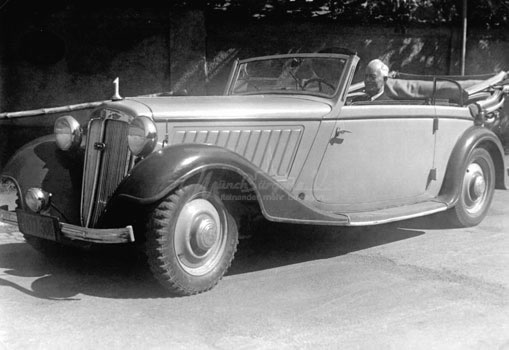 August Horch was born on October 12, 1868 as the son of the village blacksmith in the Mosel village of Winnengen. In 1882 he began his blacksmithing apprenticeship in his father’s work place and subsequently hiked through Hungary and Serbia. In 1888 he studied at the Technikum Mittweida and finished three years later as a production engineer. He worked at the Benz firm in Mannheim until 1896 as a production manager and constructed the motors.
August Horch was born on October 12, 1868 as the son of the village blacksmith in the Mosel village of Winnengen. In 1882 he began his blacksmithing apprenticeship in his father’s work place and subsequently hiked through Hungary and Serbia. In 1888 he studied at the Technikum Mittweida and finished three years later as a production engineer. He worked at the Benz firm in Mannheim until 1896 as a production manager and constructed the motors.
He founded his own first workshop in Cologne in 1899. Subsequently, August Horch planned, tested and sold various motorcars. Since his workplace became to small he produced in Reichenbach/Vogtland from 1902 and two years later he opened the A. Horch & Company Motor vehicle Works, Ltd. in Zwickau. After differences in his company he founded the August Horch Automobile Works, GmbH in 1909 and renamed it after a trial for name abuse the following year at Audi Automobile Works GmbH. Audi is the Latin translation of his family name. Under this name more cares are now built, and achieve impressive sports success.
In 1920 August Horch left the management of Audi and moved to Berlin with his wife Anneliese and his two adopted children, where the successful engine designer acted as an expert.
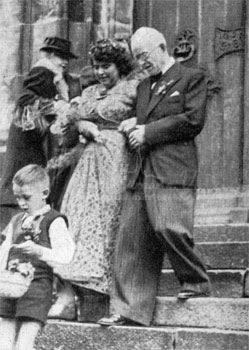 In 1920 August Horch left the management of Audi and moved to Berlin with his wife Anneliese and his two adopted children, where the successful engine designer acted as an expert.
In 1922 he was awarded an honorary Doctorate by the Technical College of Braunschweig. In 1933 he was appointed to the advisory board of the newly founded Auto Union AG (Audi, DKW, Horch and Wanderer) in Chemnitz. After he was bombed out in Berlin he moved to Saxony and finally relocated in Langenhessen in Werdau in 1944.
In 1920 August Horch left the management of Audi and moved to Berlin with his wife Anneliese and his two adopted children, where the successful engine designer acted as an expert.
In 1922 he was awarded an honorary Doctorate by the Technical College of Braunschweig. In 1933 he was appointed to the advisory board of the newly founded Auto Union AG (Audi, DKW, Horch and Wanderer) in Chemnitz. After he was bombed out in Berlin he moved to Saxony and finally relocated in Langenhessen in Werdau in 1944.
At the end of June, 1945 he succeeded in escaping to Upper Franconia, where he briefly found accommodation in Schwarzenbach on the Saale and Helmbrechts, and at long last on October 1 was housed by the American occupying forces in Schoedel’s Villa in Münchberg. His wife, who had been ill for many years, died in Berlin in 1946, two days after his adopted son Eberhard. In the Münchberg City Church August Horch married his foster daughter Elsa Kolmar on July 9, 1948 (photo right). She had been engaged for more than 15 years as a housekeeper, since his wife Anneliese was not healthy enough to do so at the time.
From Münchberg he participated in the reestablishment to the Auto Union GmbH in Ingolstadt. In addition, the car pioneer was appointed by the government to participate as a consultant and expert in Südwerken GmbH (relocated Krupp Factory) in Kulmbach. American journalists interviewed him in Münchberg and acquaintances felt that a meeting with Henry Ford could have been brought about, but the American automaker died in 1947.
At the Hofer Triangle Race “Around the Otterberg”, Horch was a guest of honor, among 50,000 visitors. He spent his twilight years in Münchberg with his wife Else and his German shepherd dog Trixi.
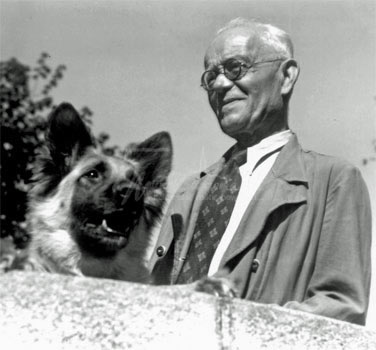 Until the last, he also had a regular and private correspondence. In his last personal letter, Federal President Theodor Heuss wrote to August Horch: “Your contributions to the German automobile industry are invaluable.”
Until the last, he also had a regular and private correspondence. In his last personal letter, Federal President Theodor Heuss wrote to August Horch: “Your contributions to the German automobile industry are invaluable.”
In Schoedel’s Villa (photo right) Horch worked on a technical book about the beginning of the German automobile industry, but he could not complete it. On February 3, 1951 the ingenious designer and founder of Audi passed away after a difficult life, weakened by his old age of 82 years. As the last greeting of his retirement home of Münchberg on the violet loops of his funeral wreath stands: “To the deserving auto pioneer and citizen of our city”. In addition to family members, Pastor Mulzer, Mayor Specht and city council members and Hans Fleißner from the ADAC (General German Automobile Assn) local branch had come together as mourners to give honorary Dr. August Horch an escort on his trip to the highway. Following his last wish, he was transferred by car to his birthplace of Winningen and buried there.
Here on the August Horch School is a plaque about his life, especially about his last years of life in Münchberg. On it can be seen a few pictures from Horch’s time in our city. You can find more about August Horch and his cars in the August Horch museum in Zwickau.
You can find more about August Horch and his cars in the August Horch Museum in Zwickau.
Georg Hacker was born in Münchberg in 1870
The airship captain Georg Hacker was born on January 18, 1870 in Münchberg along with his triplet sisters Babette and Alwine. The birth house was at present day 3 Ludwigstraße between the HMW stations H28 and H29. On the building is an information plaque. Hacker’s mother was the landlord’s daughter Magdalena Margaretha Friederike Söllner from Schlegel. The father, Adam Hacker, was the station commander of the Bavarian gendarmerie in Schwarzenbach on the Saale and was transferred in 1875 as a bank servant to the Royal Branch Bank in Hof, where he took his family. In the year 1900 the 21st child came into the world.
After the young Georg had worked for a while in the hotel “To the White Lamb”, he became acquainted with an American who had chanced to hear about the young man’s artistic talent and wanted to take him to the USA for training. Georg Hacker aspired to the profession of captain or missionary. The father, however, who always saw a future soldier in his son, then turned with an urgent request for Georg to join the ranks of the German armed forces in the “Iron Chancellor” personally, who at the age of 15 years was the youngest sailor in the German navy. His aspirations eventually earned his successful missions in the colonial wars before he, following the reputation of the renowned professor Dr. Karl Börgen, moved to the German Marine Observatory in Wilhelmshaven. On August 18, 1907 he finally responded to an advertisement that he had read in the newspaper, as an upper surveying helmsman with Count Zeppelin. This one invited him by return mail to a conversation in Friedrichshafen, and gave him the post to construct a steerable rigid airship.
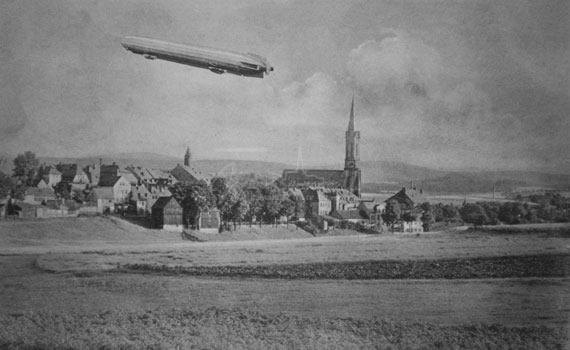 In the ranks of the “Men of Manzell”, as the population initially smilingly called the companions of the Count, Hacker began his work at the wheel of the new “airship”, as well as the drawing board, where he assisted in their development. In the following years, even the loudest critics were convinced of the functionality of the “rigid system”, one with an aluminum framework reinforced balloon. In 1909 Hacker finally got together with the Count and a few other crew members on board the airship LZ5 for a so-called “endurance run”. This trip was also announced by the newspapers in Münchberg and the Fichtelgebirge. Spurred on by that, the school children of Münchberg sent a letter to the famous son of their city and the Count: “We have heard that you are travelling to Berlin with your airship. We ask you to come over Münchberg and to travel quite low and slowly. We will expect you with our festival of flags. Dear Count, please grant our wish. Many school children.” Touched by these lines, Count von Zeppelin and Georg Hacker laid the route without further ado over the Fichtelgebirge and to the applause of the inhabitants, slowly but surely approached our area. An eye witness account from the “Messenger from Waldenstein” of April 2, 1909 put into words the magnificent sight offered by the airship: “Shortly after 10:00 it became known that the Zeppelin airship was on the way and was already in the Bayreuth area. Of course, everyone started moving and followed the appearance and further travels of the 136 meter long airship with interest, which was seen here for almost ¾ hour, if you were not so affected by the rotation here, as the reports from other spots said.” The news came at about 10:30, and the numerous visiting people immediately occupied key spots, the castle ruins and all other elevated points. The daring glider of the skies was also greeted up there. It was very decent of the airship that, in spite of the various maneuvers it carried out in the air, it always showed itself to the side, until it disappeared in the passage to visitors of another mountain, with which ZII showed its backside.” Also in Münchberg all higher points were occupied and the inhabitants waited at the Kreuzberg, on the Maulschelk, and in the city park as well as in roof windows and on roofs for the light gray colossus, which approached shortly after 11 from the direction of Gefrees (photo above). The Münchberg newspaper wrote afterwards: “An indescribable jubilation roared forth from Kreuzberg. The daring conqueror of the skies has surprised us with a grandiose Pentecost greeting.” Captain Georg Hacker described this moment over his hometown later in his usual factual memoirs thus: “I threw a card out to a relative. Then it went around the city. A look at Schlegel, the birthplace of my late mother. And then on course to Hof. “ The card was found in the Haberbach field and was validated by Gustav Hegenberger.
In the ranks of the “Men of Manzell”, as the population initially smilingly called the companions of the Count, Hacker began his work at the wheel of the new “airship”, as well as the drawing board, where he assisted in their development. In the following years, even the loudest critics were convinced of the functionality of the “rigid system”, one with an aluminum framework reinforced balloon. In 1909 Hacker finally got together with the Count and a few other crew members on board the airship LZ5 for a so-called “endurance run”. This trip was also announced by the newspapers in Münchberg and the Fichtelgebirge. Spurred on by that, the school children of Münchberg sent a letter to the famous son of their city and the Count: “We have heard that you are travelling to Berlin with your airship. We ask you to come over Münchberg and to travel quite low and slowly. We will expect you with our festival of flags. Dear Count, please grant our wish. Many school children.” Touched by these lines, Count von Zeppelin and Georg Hacker laid the route without further ado over the Fichtelgebirge and to the applause of the inhabitants, slowly but surely approached our area. An eye witness account from the “Messenger from Waldenstein” of April 2, 1909 put into words the magnificent sight offered by the airship: “Shortly after 10:00 it became known that the Zeppelin airship was on the way and was already in the Bayreuth area. Of course, everyone started moving and followed the appearance and further travels of the 136 meter long airship with interest, which was seen here for almost ¾ hour, if you were not so affected by the rotation here, as the reports from other spots said.” The news came at about 10:30, and the numerous visiting people immediately occupied key spots, the castle ruins and all other elevated points. The daring glider of the skies was also greeted up there. It was very decent of the airship that, in spite of the various maneuvers it carried out in the air, it always showed itself to the side, until it disappeared in the passage to visitors of another mountain, with which ZII showed its backside.” Also in Münchberg all higher points were occupied and the inhabitants waited at the Kreuzberg, on the Maulschelk, and in the city park as well as in roof windows and on roofs for the light gray colossus, which approached shortly after 11 from the direction of Gefrees (photo above). The Münchberg newspaper wrote afterwards: “An indescribable jubilation roared forth from Kreuzberg. The daring conqueror of the skies has surprised us with a grandiose Pentecost greeting.” Captain Georg Hacker described this moment over his hometown later in his usual factual memoirs thus: “I threw a card out to a relative. Then it went around the city. A look at Schlegel, the birthplace of my late mother. And then on course to Hof. “ The card was found in the Haberbach field and was validated by Gustav Hegenberger.
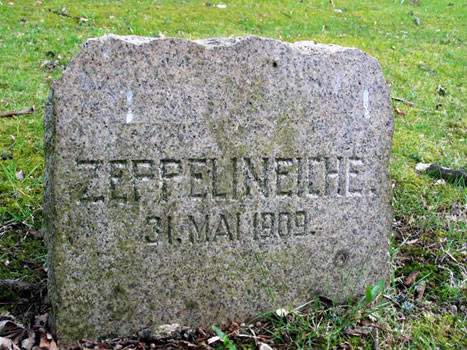 Just three months later, on August 28, a second airship crossed over Münchberg and Hof. With the success of this so-called “imperial journey” Count Zeppelin had finally reached his goal. The emperor was thrilled, as were the German people and the world press. The triumphal journey of the airship could begin. In the Fichtelgebirge many commemorative stones and so-called “Zeppelin Oak” can still be found where you can still visit them today in Reinersreuth at the foot of the Waldstein. In front of it is a memorial stone (photo right).
Just three months later, on August 28, a second airship crossed over Münchberg and Hof. With the success of this so-called “imperial journey” Count Zeppelin had finally reached his goal. The emperor was thrilled, as were the German people and the world press. The triumphal journey of the airship could begin. In the Fichtelgebirge many commemorative stones and so-called “Zeppelin Oak” can still be found where you can still visit them today in Reinersreuth at the foot of the Waldstein. In front of it is a memorial stone (photo right).
Georg Hacker still commanded different machines during the First World War; he led the airship port in Potsdam and slowly retired from active service in the mid 30’s. When the newest model of the Zeppelin Works, LZ 129, departed on its first voyage in 1936, Hacker took this occasion to issue his memoirs, which he published under the title “The Men of Manzell”. He closed with the words: “ We greet the new airship of 1936, which should connect countries and people through the air, and should advertise for Germany.” Only a year later, LZ 129, which had received the name “Hindenburg” and was decorated with swastikas contrary to the wishes of the Zeppelin Company, exploded at Lakehurst in America and killed 36 people. This explosion remains to this day one of the most tragic misfortunes of air travel history. The National Socialists (Nazis), especially Hermann Göring, who had been critical of the peaceful use of the “giants of the skies” from the outset, immediately cancelled all trips. The ships were scrapped a short time later and the production sites were blown up. With that the dream of the Count came to an end. His longtime comrade and first Zeppelin captain, Georg Hacker, was celebrated by hundreds of thousands on his journeys over Germany, and died in Potsdam in 1947 at the age of 77. The aviation pioneer Hacker did not experience the rebirth of the small “Zeppelins”, which was named in honor of its inventor, yet he has assured his place in the history of aviation. Even today they count on his initiative with nautical units.
Johann Wolfgang Döbereiner began his pharmacist’s apprenticeship in Münchberg in 1794
Johann Wolfgang Döbereiner was born on December 13, 1780 in Hof, and died on March 24, 1849 in Jena. He was a chemist and is considered a mastermind for the formation of the Periodic Table and paved the way for analysis with platinum.
As the son of a manorial coachman and farm laborer, he grew up on a manor in Bug at Weißdorf in poor conditions and with insufficient education. His father later became the land agent and awoke Johann Wolfgang Döbereiner’s interest in nature. In the Münchberg city pharmacy the boy is said to have observed two chemical tests by the pharmacist Christian Ernst Friedrich Lotz and to have been so impressed that he also wanted to learn this profession. Unlike Döbereiner’s mother, his father was not enthusiastic about it. But at long last the boy was allowed to acquire his first Latin skills from the Weißdorf pastor.
In 1794 he began his pharmacy apprenticeship in the City Pharmacy in Münchberg (at that time in the area of H14); his subsequent five year journey led him to Straßburg. There he was able to catch up on his education in botany, mineralogy, chemistry and pharmacy with private teachers at the university. Here he also wrote his first scientific work. In 1802 Döbereiner returned to Münchberg and worked with Lotz as a chemist’s assistant. He did not, however, succeed in becoming a self-employed pharmacist. So, in Gefrees he founded a drug- and agricultural products business with a factory for pharmaceutical-chemical preparations.
On April 24, 1803 he married Clara Henriette Sophie Knab. She was the daughter of Christian Friedrich Gotthelf Knab, royal
Brandenburg-Bayreuth Counsel and bailiff in Münchberg. In his factory work Döbereiner made discoveries, which were published, in a scientific journal, which made natural scientists aware of him. In Gefrees they allowed the newcomer nothing, and finally gave him notice, since he had no pharmacist’s license and was not a trained merchant. Thereupon Johann Wolfgang Döbereiner left Gefrees with his family and came to the cotton manufacturing operation of his brother in law in Münchberg. There he could initiate improvements such as chlorine bleach in the dye house and bleach houses. Due to the bad economic situation he was then terminated. After that he found a position as the manager of Gut St. Johannes brewery and distillery in Bayreuth, just so he could feed his wife and three children.
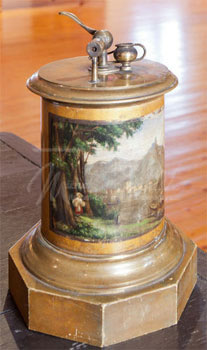 Through the publication of his investigation of practical chemical problems, however, they became aware of him and appointed his as adjunct Professor of Chemistry and Technology at the University at Jena in 1810. He was prized there, especially for his versatility. Döbereiner became a chemical advisor to Goethe and made the acquaintance of Grand Duke Carl August of Weimar. That also helped him get involved in various industries, spurred on by the then strongly developing economy. He successfully worked on improving manufacturing processes, so that he had enough income to be able to cover his now eight children. He did much research into the catalytic action of platinum metals, which led to the development of the Döbereiner platinum lighter and tinder and made him famous. Until then, one had to laboriously light a fire with steel, flint and tinder. Of the Döbereiner lighters (photo right) about 20,000 were sold and it was still produced into the 20th century in Schleiz. One is in the Bavarian Vogtland Museum in Hof.
Through the publication of his investigation of practical chemical problems, however, they became aware of him and appointed his as adjunct Professor of Chemistry and Technology at the University at Jena in 1810. He was prized there, especially for his versatility. Döbereiner became a chemical advisor to Goethe and made the acquaintance of Grand Duke Carl August of Weimar. That also helped him get involved in various industries, spurred on by the then strongly developing economy. He successfully worked on improving manufacturing processes, so that he had enough income to be able to cover his now eight children. He did much research into the catalytic action of platinum metals, which led to the development of the Döbereiner platinum lighter and tinder and made him famous. Until then, one had to laboriously light a fire with steel, flint and tinder. Of the Döbereiner lighters (photo right) about 20,000 were sold and it was still produced into the 20th century in Schleiz. One is in the Bavarian Vogtland Museum in Hof.
The Law of the Triades was the second large discovery that Döbereiner made. He determined that bromine in its characteristics was only slightly different from chlorine and iodine. Already earlier he discovered connections between calcium, strontium and barium as well as similarities in the triplet of sulfur, selenium and tellurium. In 1829 he published his results on the arrangement of 30 of the then known 53 elements in triplets, but his contemporaries believed more in coincidence and not in the great importance of this triad rule. This, however, formed an important basis for the 1870 development of the Periodic Table of the Elements.
Johann Wolfgang Döbereiner died as the father of nine children on March 24, 1861 in Jena. Near Münchberg at Rittergut in Bug where he spent his childhood is a commemorative plaque. An information board on the former Office of the District Administrator marks the spot at which the city pharmacy, in which Johann Wolfgang Döbreiner was active, stood until 1837.
Robert Zahn was born in Münchberg in 1861
The famous embroidery machine construction engineer, Robert Zahn, was born in Münchberg on March 23, 1861. (present day Bismarckstraße 56, between H11 and H12). His younger brother was named Richard and their father was Christian Karl Zahn, who was married to Johanna Louise Jahreis. Together they had five children. After his company went bankrupt he left his family and emigrated to America in 1865, because he probably had trouble with his business partners.
Robert Zahn went to school in Münchberg until 1873 and then moved to the trade school in Hof for three years. From 1876 he studied for three years at the technical center in Mittweida, from where an uncle who financed his studies called him back to Münchberg, due to lack of studious attitude. What happened in the time from 1879 to 1882 is not documented. He could, however, have completed a commercial apprenticeship under the guardianship of his uncle in Upper Franconia.
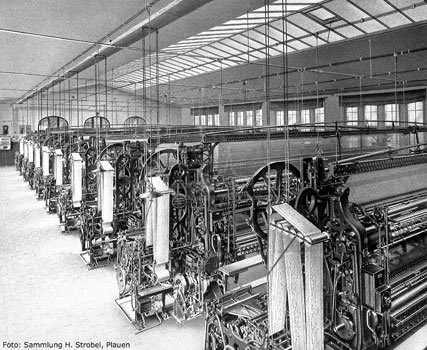 In 1882 Zahn began as a technician in the Kappell embroidery machine factory in Chemnitz. He worked there for twelve years, but the company management slowed the zeal of the ambitious designer. So he switched to the competition in the Hilscher knitting and embroidery factory in Chemnitz. Together with his boss, Max Hilscher, he announced two Reich patents in 1895. The following year he signed an employment contract with the Vogtland factory in Plauen. After working in the world’s largest machine embroidery plant , Feldmühle AG in Switzerland, he returned to the VOMAG (Vogtland Machine Factory, Ltd.) in Plauen in 1900. The following year the Plaueners began the production of jacquard embroidery machines and signed a license agreement for it with the Feldmühle AG. As director of more than 3,000 employees and one of the most successful engineering companies Robert Zahn traveled a lot throughout Europe and to America. However, he no longer wanted to pay royalties to the Swiss Gröbli system, so the ambitious machine builder and his VOMAG team developed their own embroidery machine. In three years over 2,000 pieces were sold by him, not only in Germany, but also in Switzerland, Bohemia, France, Russia, Italy and the USA. The “Zahn System” machines were the best worldwide. The Zahn shuttle embroidery machines were also in Upper Franconia, the last was dismantled in 2014 in Selbitz. Under director Robert Zahn a very successful second big VOMAG development was rotary printing press. During this time in 1908 and 1912 respectively, the largest rotary printing press in Europe as well as the first offset printing press in the world was built.
In 1882 Zahn began as a technician in the Kappell embroidery machine factory in Chemnitz. He worked there for twelve years, but the company management slowed the zeal of the ambitious designer. So he switched to the competition in the Hilscher knitting and embroidery factory in Chemnitz. Together with his boss, Max Hilscher, he announced two Reich patents in 1895. The following year he signed an employment contract with the Vogtland factory in Plauen. After working in the world’s largest machine embroidery plant , Feldmühle AG in Switzerland, he returned to the VOMAG (Vogtland Machine Factory, Ltd.) in Plauen in 1900. The following year the Plaueners began the production of jacquard embroidery machines and signed a license agreement for it with the Feldmühle AG. As director of more than 3,000 employees and one of the most successful engineering companies Robert Zahn traveled a lot throughout Europe and to America. However, he no longer wanted to pay royalties to the Swiss Gröbli system, so the ambitious machine builder and his VOMAG team developed their own embroidery machine. In three years over 2,000 pieces were sold by him, not only in Germany, but also in Switzerland, Bohemia, France, Russia, Italy and the USA. The “Zahn System” machines were the best worldwide. The Zahn shuttle embroidery machines were also in Upper Franconia, the last was dismantled in 2014 in Selbitz. Under director Robert Zahn a very successful second big VOMAG development was rotary printing press. During this time in 1908 and 1912 respectively, the largest rotary printing press in Europe as well as the first offset printing press in the world was built.
Robert Zahn decisively influenced the development and construction and construction of engraving machines. He died on January 21, 1914 in the hospital in Leipzig and left behind four children. After his death the estate administrator filed a patent for the presser devices of embroidery machines, so that Zahn was awarded a further patent posthumously in 1915.
In the Embroidery Exhibition Plauen his legacy is vividly preserved and maintained, the historic embroidery machine can be seen in action and admired there.
Ludwig Zapf was born in Münchberg in 1829 and spent his life here
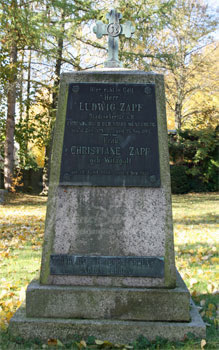 Ludwig Zapf was born in Münchberg on December 16, 1829 (Kulmbacher Straße 11, between H27 and H28) and died on August 25, 1904. He was publisher, owner and editor of the Münchberg Official and Weekly Newspaper, which his father Karl had founded. He took over the editing of the Münchberg Offical and Weekly Newspaper in 1845.
Ludwig Zapf was born in Münchberg on December 16, 1829 (Kulmbacher Straße 11, between H27 and H28) and died on August 25, 1904. He was publisher, owner and editor of the Münchberg Official and Weekly Newspaper, which his father Karl had founded. He took over the editing of the Münchberg Offical and Weekly Newspaper in 1845.
Ludwig Zapf was considered a committed local historian and was a city clerk. Most of his writings dealt with prehistoric, local and folkloric essay as well as essays about his home around the Fichtelgebirge. He actively engaged in the establishment of the city archives and the construction of the local trains to Helmbrechts and Zell.
Since 1893 he has been a honorary citizen of Münchberg and in the 1920’s a street was named after him.
Also, well beyond his home country, Ludwig Zapf gained familiarity and esteem. In 1871 he became a corresponding member of the international Anthropologist Congress in Budapest and in Lisbon in 1880. A few of his works are: “Story Circle of the Fichtelgebirge” from 1873, the “Waldstein Book “ from 1886 and the “Fichtelgebirge Album” of 1892.
His gravestone stands to this day next to the Cemetery Church (photo right). On his birth house at Kulmbacher Straße 11 (shortly before H28 Furt) there is an information board.
Cornelia Vetterlein was born in Münchberg in 1811
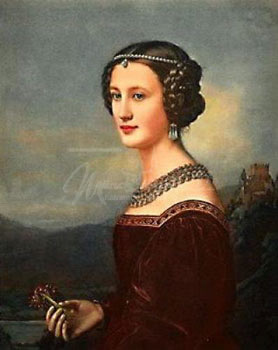 Treasury clerk and tax rectification commissioner Johann Karl Martin Vetterlein and his wife Johanna Rosalia, a daughter of the Bavarian court gardener Schneider, had five daughters. The oldest of the children, Cornelia Vetterlein, was born on December 25, 1811 in Münchberg (H14 present day Ludwigstraße 14). She married the nobleman Franz Ludwig Friedrich von Künßberg of Hain-Schmeilsdorn on October 10, 1843 and bore him a daughter Christiana Antoinette. Cornelia Johanna Vetterlein died on March 5, 1862 in Schmeilsdorf near Kulmbach.
Treasury clerk and tax rectification commissioner Johann Karl Martin Vetterlein and his wife Johanna Rosalia, a daughter of the Bavarian court gardener Schneider, had five daughters. The oldest of the children, Cornelia Vetterlein, was born on December 25, 1811 in Münchberg (H14 present day Ludwigstraße 14). She married the nobleman Franz Ludwig Friedrich von Künßberg of Hain-Schmeilsdorn on October 10, 1843 and bore him a daughter Christiana Antoinette. Cornelia Johanna Vetterlein died on March 5, 1862 in Schmeilsdorf near Kulmbach.
For the beauty gallery of King Ludwig I Joseph Karl Stieler painted a portrait of her (picture right) on April 14, 1828. Stieler was named court artist in 1820 and created almost all of the 36 portrait paintings of women of noble birth as well as middle class origin in the Nymphenburg palace. The dancer Lola Montez, who was a lover of the King, was also among them.
Heinrich Heine wrote the following lines in the 1840’s in his songs of praise to King Ludwig about Ludwig I and his Gallery of Beauty:
This is Ludwig of Bavaria,
There are none the same;
The people of Bavaria look up to him
The consummate king.
He loves art and the most beautiful women,
Which he has portrayed;
He goes walking in this painted seraglio
As an art eunuch.
Video: Aerial view August Horch School and buildings of famous Münchbergers
Copywriters, authors, photographers, rights holders or sources:
Rainer Fritsch, Jürgen Pönisch, Adrian Roßner, Norbert Goßler, Heino Strobel, Daniel Bitterwolf, Edgar Seifert,
August Horch Museum Zwickau, Museum Bayerisches Vogtland Hof, city archives
